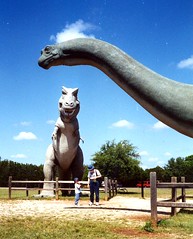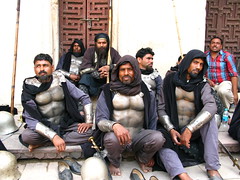 Image via Wikipedia
Image via Wikipedia Image via Wikipedia
Image via WikipediaSeveral years ago, citigroup has a collection or package of mortgages. It knows that they'll probably fall through. It goes through and picks out the ones that are most likely to bust, about 500 million dollars worth, and then sells them to hedge funds and investment groups. It is so sure that they're going to bust that it then shorts them.
Shorting goes something like this from my understanding: you think an investment will do well, so you buy it, and when it has done well, you sell it to make a profit. You think an investment will do poorly, so you sell it, and when it does poorly, you buy it back to make a profit. Apparently you can somehow sell these items that you don't own, and then buy them back again at the altered value. Except you wouldn't get them back again, because you didn't own them.
After Citigroup sold them, and no longer had them, then it shorted them (knowing that they were going to go bust). Basically they made more money than they were worth by selling them, and then made more money by betting that they would bust.
Corruption!!!! I really like the article's explanation and advice (from Thomas L. Friedman) This is a quote from the article: "One consumer group using information from Opensecrets.org calculates that the financial services industry, including real estate, spent $2.3 billion on federal campaign contributions from 1990 to 2010, which was more than the health care, energy, defense, agriculture and transportation industries combined. Why are there 61 members on the House Committee on Financial Services? So many congressmen want to be in a position to sell votes to Wall Street.
We can’t afford this any longer. We need to focus on four reforms that don’t require new bureaucracies to implement. 1) If a bank is too big to fail, it is too big and needs to be broken up. We can’t risk another trillion-dollar bailout. 2) If your bank’s deposits are federally insured by U.S. taxpayers, you can’t do any proprietary trading with those deposits — period. 3) Derivatives have to be traded on transparent exchanges where we can see if another A.I.G. is building up enormous risk. 4) Finally, an idea from the blogosphere: U.S. congressmen should have to dress like Nascar drivers and wear the logos of all the banks, investment banks, insurance companies and real estate firms that they’re taking money from. The public needs to know."
I really like number 1. It's my idea as well from a previous blog. "If a bank is too big to fail, it is too big, and needs to be broken up."






















































